Mikkel Borg Bjergsø, wearing a green long sleeved shirt and a pair of shorts, is quietly drinking his beer. It’s the last Saturday of September, about 12 AM, he just finished his short run in Herastrau Park and has now returned in his recently opened bar in Bucharest, on Charles de Gaulle 3. ‘You guys didn’t showed up at the running tour’, he tells us seriously. Then he laughs and points at a table: ‘Let’s sit down there‘.
At 42 years old, he is one of the most influential people in the world of craft beer. And it didn’t took him too long to get there. In 2006 he was still a simple maths and physics teacher who experimented with malt, hops and yeast in a kitchen in Copenhagen. He used to homebrew with his friend, Keller, so the name for their next brewery came out easily: Mikkeller. A year later, Keller left the business in order to follow a path in journalism, but Mikkel remained loyal to the beer. He started to work with the Belgian brewery De Proef in order to brew his beers in large quantities. It’s an ongoing collaboration which once made him famous as a “gypsy brewer”.
He’s been in Bucharest for less than 24 hours, but he will go back home, in Copenhagen, very soon. Probably not for a long time, because his schedule looks really busy in the following months. A new Mikkeller bar in Faroe Islands and a brewery in the heart of New York, inside the Mets’ baseball stadium, are scheduled to open this fall. ‘We like to do unexpected things‘, says Mikkel smiling.
For the craft beer fans, the decision of opening a Mikkeller bar in Bucharest is also unexpected. So when we’ve heard that Mikkel Borg Bjergsø himself will come to run with the fans in Herastrau (he has running clubs all around the world), we knew that we must find all the details directly from him. :-)
Let’s start with the question that everybody’s asking. Why Bucharest?
We are a company which does a lot of stuff different from anybody else. We like to open bars in unexpected places, where we can make a big change. That’s why a lot of our bars are based in places where there is pretty much no craft beer scene. And this is how we’ve opened in Bucharest our first Eastern European bar.
What do you know about the Romanian craft beer scene?
At the moment, we know that you guys have less than 20 craft breweries here, which is not much for a country with over 18 million people.
Indeed. It’s a phenomenon which is growing right now…
Exactly! And we want to be part of it, to make the craft beer even more popular. We want to help ‘kickstart’ that and to put an international focus on Bucharest and on Romania. Because we have a name in this industry, we have many fans who travel around the world for our bars and beers and they will also come here. But that is not the main purpose. We want the local people to hear about this, to come here, to try new beers and realize there is much more than industrial beer.
Do you have any succesful recipes when it comes about bars?
We do this pretty often. For example, our third bar was in Bangkok. We opened it almost 4 years ago, when in Thailand there was absolutely no craft beer scene. Everybody was drinking Singha and Chang, the cheapest beers on the market. Since our opening, the craft beer scene in Bangkok has increased a lot.
Our next bar will be opened in Faroe Islands. It is a country of 50.000 people and half of them don’t drink alcohol because they are Christians. Which leave us with 25.000 people, so a very small “database”. We are the first international brewery to open a bar there, so it will be very fun.
But how about the big cities?
We can’t do big differences there. Ok, we have bars in cities like San Francisco or Los Angeles and we are appreciated because we have fresh beers and unique recipes, but we won’t be able to do any big changes there because they already have a huge craft beer scene.
How did you come up with the idea of opening the first Mikkeller bar seven years ago?
It happened because I didn’t had my own brewery. Mikkeller quickly became an international brand and there were a lot of people coming to Copenhagen to meet me. I was supposed to take them at all kind of different bars filled with old men, with big bellies, sitting down with big glasses and listening to rock music. You know, those old Irish-style pubs.
Not quite the proper places for a meeting, right?
Not at all! So I’ve said: ‘let’s make a bar for everybody’. A bar where you couldn’t be excluded, even if you were a young woman or an old man who wants to go out in the city. But at the same time, the bar was supposed to be a place where I could expose my own beers, like a showroom.
Which would be the elements you can pretty much find in every Mikkeller bar around the Globe? Except for the beers, of course.
We have this thing in Denmark called hygge, which can be translated as coziness. It’s something we want to create in every bar. You can come in our bars to sit down, relax, have a beer and feel the coziness even if it might get loud sometimes or completely crowded.
Every Mikkeller bar is based on my idea of good quality – when it comes to design, music, service and obviously beer. For me it’s very important to let the people know that we are friendly, welcoming and good in what we’re doing.
After what we saw last night here, we have to admit that it turned out pretty well.
We want our people behind the bar to enjoy what they do and to encourage the clients to try new things. The customers we like the most are the ones who never had a craft beer before, because our people can guide and help them.
I like the people who know a lot about beer, but I think they shouldn’t stay behind the bar. They tend to look smarter, to show that they know many things about a beer, but a person who never tried craft beer before can see them as arrogants.
Speaking about recommandations, which are the beers you would recommend to a person who comes to Mikkeller Bucharest for the first time?
I would definitely recommend the house beers. We only have four in Bucharest – a pilsner, a Belgian wit, a brown ale and a spontan ale. They are all accessible and easy to understand – except for the spontan. But if you’ve never tried a Mikkeller beer before, you can start with those and after that continue with other ones.
We know that you will open a second brewery in the U.S., but in Europe you are still brewing your beers in other breweries. What motivates you to remain a “gipsy brewer”?
Because it works. I mean, don’t fix it if it’s not broken. Plus, it gives me freedom to focus on what I really think it’s interesting: creating new recipes, opening bars, restaurants, organizing festivals.
We could, obviously, build a brewery in Europe. But it wouldn’t made any difference. I like to brew my beers at breweries all around the Europe: many black beers are brewed at Lervig, in Norway, other ales are brewed at Warpigs, in Copenhagen, and I make my spontan beers in Belgium, because Belgians are really good at it.
Your second brewery in the U.S. will be located inside the New York Mets’ stadium. What does it mean for Mikkeller to be part of the American culture?
It’s a project that gained a lot of attention, because New York Mets is one of the most important teams in the American sports. It was an extremely unexpected movement – everybody believed that Brooklyn Brewery or other American brewery will open something there. But we took the chance and here we are. :-) Imagine the New York Mets fans watching their favorite team and drinking Mikkeller. Obviously, this might change something on the stadiums, where everybody is drinking Budweiser. So I really hope to see those kind of changes in other places, too.
How often do you make these kind of special projects?
From time to time. This one is pretty similar to what we did with Scandinavian Airlines. We were the first craft brewery which started a collaboration with an airline company. I strongly believe that in a few years, most of the airlines will have craft beers in their menus. And it’s good to know that we started this.
We would like to talk about another crazy project. Next year, you and some Mikkeller Running Club fans will participate in the Pyongyang marathon, in North Korea. How did you came out with this idea?
I travel all around the world and I love to see new places. North Korea is a place I’ve never been to. I know that it’s a corrupt place and that really bad things are happening there, but it has something that attracts me.
A lot of people are saying that it’s not good, because we support the system and stuff. But I think that’s not right. I think that North Koreans need to see people like us. They are told that Americans have horns and they strongly believe that because they didn’t saw the opposite. But they need to see that there are normal people outside their country. Otherwise, nothing will change.
Obviously, if by that moment there will be any risks and the political situation will not be a good one, we won’t do this tour. We don’t want to put anybody in danger.
We know that the food plays an important role in Mikkeller’s philosophy, but how hard is to convince people that they can combine good food with craft beer, not just with wine?
It’s difficult to convince chefs with Michelin-starred or fine-dining restaurants. We are working on this thing for 11 years, we were successful in many occasions, but still, lots of chefs can’t understand the phenomenon.
If you open a restaurant, you are extremely careful with all the ingredients, you have a relationship with the providers, you pay attention to what wine you’re serving. But you still have shitty beer in your menu. I can’t understand that.
More than that, it’s really hard to convince them. I think some of them are a little scared of craft beer because they don’t know what is it. They spent their entire life working with ingredients, getting to know so many things and suddenly there is this new world – the beer world – which is as big as the food world. And a lot bigger than the wine world. The wine is made from only one ingredient: grapes. But with beer, you can play with millions of things. And that is hard to understand.
But you’ve had collaborations with many famous chefs before. How did chefs like Rene Redzepi, the Roca brothers or Grant Achatz inspired you?
Each collaboration and each chef I have worked with has inspired me in one way or another. Each one has a different approach in using techniques, in combining taste and textures. And the way they manage to create a harmony in all these things is truly inspirational.
Any upcoming collaborations on the culinary part?
Not at the moment. To be honest, it’s a phenomenon which is growing too slow. They don’t seem to keep up the pace and they are still doing the same things they did five years ago.
I mean in Copenhagen we have some of the best restaurants in the world – see Noma and not only. But there are so many restaurants which do the same thing. I can’t understand why things don’t change, why they don’t make something new.I don’t understand why everybody wants to be like Noma. Ok, Noma is great, but we already have 10 restaurants who want to be exactly the same so we don’t need 10 more…
On the other part, you guys continue to inovate and come up with all kind of aromas and new flavours. How are you coming up with all these ideas? Are you testing beers? Are you brainstorming with the team?
I get my inspiration from everything. From eating, traveling, talking with coffee roasters, meeting new people. We don’t have creation meetings where we stay and discuss about how we have to invent 5 beers in a week. There is no such pressure on us.
How do you think the craft beer phenomenon will evolve in the following years?
If we are talking about what’s happening outside the United States, i think it’s only at the beggining. But in the States, I believe it has reached its peak. They have so many breweries and the interest in craft beer is crazy.
I believe that over the years, it would be the same here, in Europe. That you would just walk in a gas station, for example, and go home with a six pack of good beer. I hope it would be something normal.
What role played beer review websites like Beeradvocate or Ratebeer in Mikkeller’s development?
We didn’t had a `relationship` with Beeradvocate , because it’s focused on American beers. But Ratebeer played an important role, because it brought us in the spotlight and we had good reviews since day one. However, today I don’t care too much about these reviews.
I mean, ok, we are happy when somebody gives us a positive review. It means that we’ve made a good beer. But we didn’t took it too much in serious when we are getting bad reviews, because we know we did our best in order to brew that beer.
Even it might sound like a cliche, which are your top 5 beers ever tried?
That’s hard to tell. What’s your top 5?
Hmm..
Exactly. You can’t find an answer too easy. I would say this one is the best (n.a. – he shows us the Belgian brewery Orval tattooed on his left arm), but my palate is changing. For example, until 2 years ago, I’ve never had a New England IPA. Because they didn’t existed. But I drink a lot of them right now, because they are really, really good. I love 3 Floyds, for their strong, hoppy beers, but also the Belgian breweries, like De Dolle.
How about your favorite food?
I eat a lot of Asian food. I travel there a lot and my wife’s family is from Hong Kong. I love Dim Sum. We have this restaurant in Copenhagend called Fu Hao, which is focused on Dim Sum and it’s like my second home. I go there at least once per week, I’ve even learned the whole menu. It’s the type of place where you can spill some soy sauce on the table and nobody gives a shit.
And to end in a travel-related manner, is there any city in the world you would travel for a beer?
Copenhagen (n.a. – laughing), because I will fly there today. Now seriously speaking, I would probably choose Antwerp for this place called Kulminator. It might be the first real beer bar in the world. It’s 40 years old and it’s an extraordinary place. It’s run by an old couple – Dirk and Leen. In all those years, they’ve never had an employee. It’s opened six days per week and sometimes it’s closed on holidays. It’s said that they have more than a million beers in their basement. And in 1982, Dirk bought an entire batch of Oerbier from De Dolle and he still has some bottles. So you can basically go there and drink beers from the ‘70s or ‘80s. They even have cats in the bar, an old clock ticking at every 15 minutes. It’s like getting back home to grandma and grandpa.









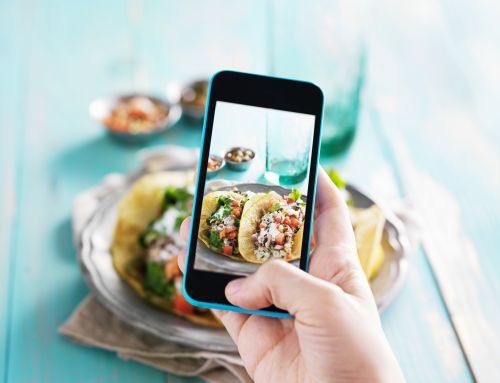
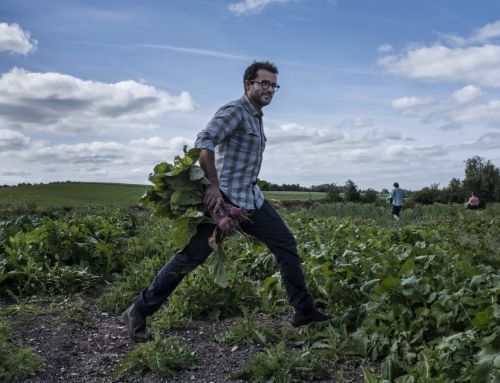
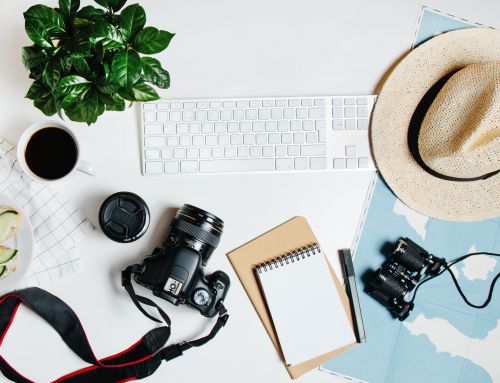
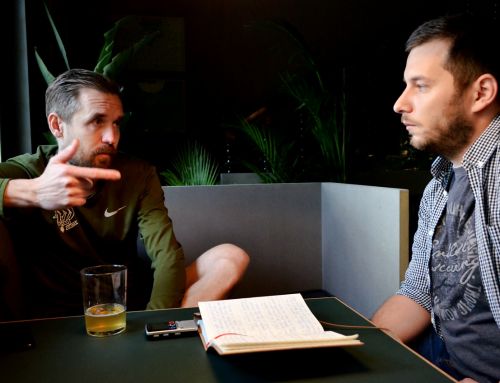
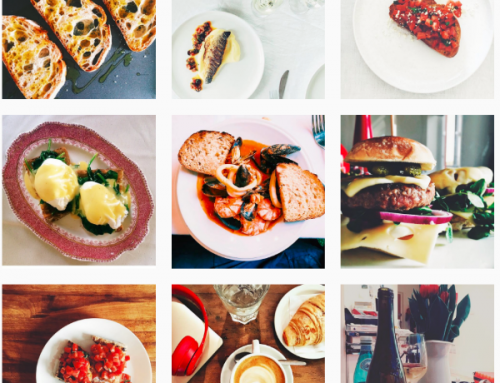
Leave A Comment